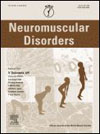 In this study, genome-wide homozygosity mapping was used to map a novel myopathic phenotype to chromosomal region 1q25 in a consanguineous family: three individuals manifesting proximal and distal weakness and atrophy were affected, with rigid spine and contractures of the proximal and distal interphalangeal hand joints. Additionally, cardiomyopathy and respiratory involvement were noted. DNA sequencing of torsinA-interacting protein 1 (TOR1AIP1) gene encoding lamina-associated polypeptide 1B (LAP1B), showed a homozygous c.186delG mutation that causes a frameshift resulting in a premature stop codon (p.E62fsTer25). Expression of LAP1B was absent in skeletal muscle fibres. Ultrastructural examination showed intact sarcomeric organization but alterations of the nuclear envelope including nuclear fragmentation, chromatin bleb formation and naked chromatin were observed. LAP1B is a type-2 integral membrane protein localized to the inner nuclear membrane that binds to both A- and B-type lamins, and is involved in the regulation of torsinA ATPase. Interestingly, in the absence of LAP1B, luminal domain-like LAP1 (LULL1), an endoplasmic reticulum-localized partner of torsinA, was overexpressed in muscle. Therefore, the findings suggest that LAP1 and LULL1 might have a compensatory effect on each other. This study expands the spectrum of genes associated with nuclear envelopathies and highlights the critical function for LAP1B in striated muscle.
In this study, genome-wide homozygosity mapping was used to map a novel myopathic phenotype to chromosomal region 1q25 in a consanguineous family: three individuals manifesting proximal and distal weakness and atrophy were affected, with rigid spine and contractures of the proximal and distal interphalangeal hand joints. Additionally, cardiomyopathy and respiratory involvement were noted. DNA sequencing of torsinA-interacting protein 1 (TOR1AIP1) gene encoding lamina-associated polypeptide 1B (LAP1B), showed a homozygous c.186delG mutation that causes a frameshift resulting in a premature stop codon (p.E62fsTer25). Expression of LAP1B was absent in skeletal muscle fibres. Ultrastructural examination showed intact sarcomeric organization but alterations of the nuclear envelope including nuclear fragmentation, chromatin bleb formation and naked chromatin were observed. LAP1B is a type-2 integral membrane protein localized to the inner nuclear membrane that binds to both A- and B-type lamins, and is involved in the regulation of torsinA ATPase. Interestingly, in the absence of LAP1B, luminal domain-like LAP1 (LULL1), an endoplasmic reticulum-localized partner of torsinA, was overexpressed in muscle. Therefore, the findings suggest that LAP1 and LULL1 might have a compensatory effect on each other. This study expands the spectrum of genes associated with nuclear envelopathies and highlights the critical function for LAP1B in striated muscle.
